Viterbo, the City of Popes, has been a Papal Seat in the thirteenth century, hosting in the Papal Palace a long succession of Pontiffs.
Town of art and culture, between the Vico and Bolsena Lakes and close to the Cimini Mountains, Viterbo boasts Medieval Churches, Renaissance Palaces, archaeological areas, thermal baths, excellent food, and cultural traditions.
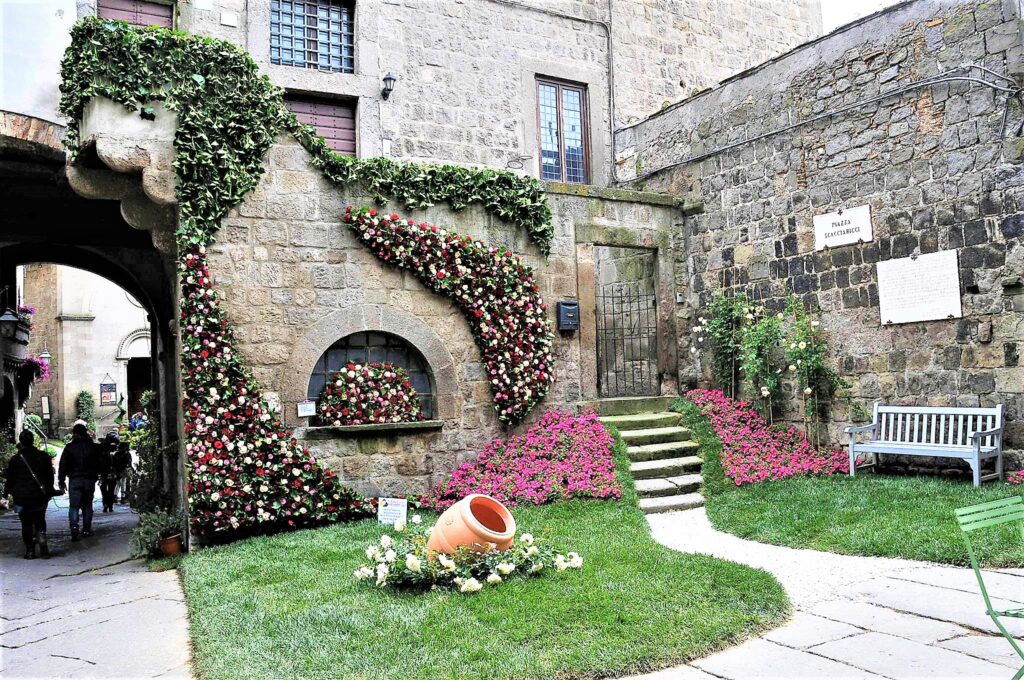
The medieval neighbourhoods of San Pellegrino
Absolutely worth a visit are Palazzo dei Priori, Palazzo dei Governatori and Palazzo del Podestà. The district of San Pellegrino, the authentic symbol of the Ancient Viterbo, is counted among the largest medieval neighbourhoods in Europe. Here, everything has remained unchanged, the pavement, the barrel-vaulted houses, arches, loggias, and the famous profferli, external staircases connecting the courtyard to the ground floor. Along the stretch of via San Pellegrino corresponding to via Francigena, buildings rest on the local grey tuff.
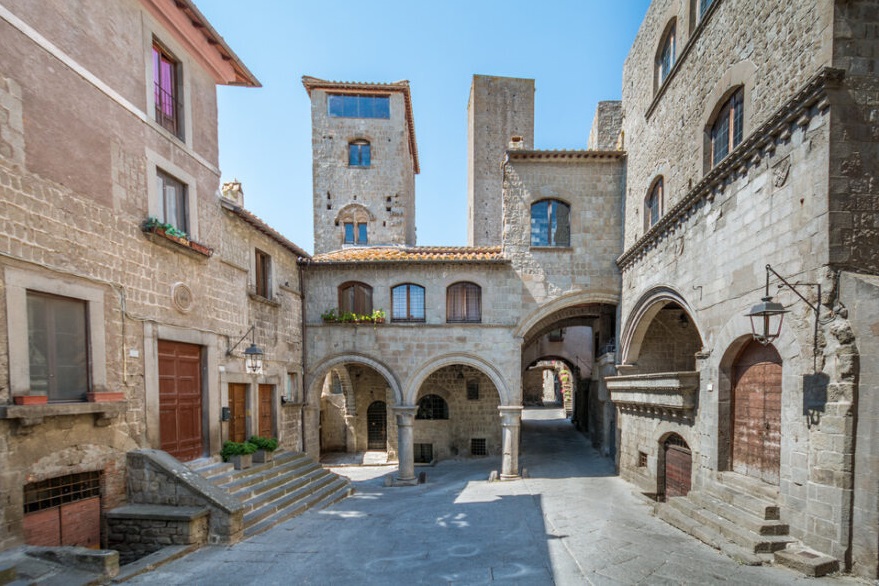
Palazzo degli Alessandri in the district of San Pellegrino
Viterbo also hosts fourteenth-century monuments, such as the very old Church of San Pellegrino, or the Palazzo degli Alessandri, a three-storey building preserving an internal profferlo, with a star decorated parapet.

The Cathedral of Viterbo
In the heart of the historic centre, stands out the Romanesque Cathedral of San Lorenzo, or Duomo di Viterbo. In the mid-thirteenth century, this place of worship became very important, thanks to the Popes who resided in the nearby Papal Palace.
In 1192, the Church was transformed into a Romanesque construction on an ancient parish church. On the other hand, the bell tower, in a typical Tuscan Gothic style, was built towards the end of 1300. The Cosmatesque floor in the central nave and the valuable paintings are breathtaking.
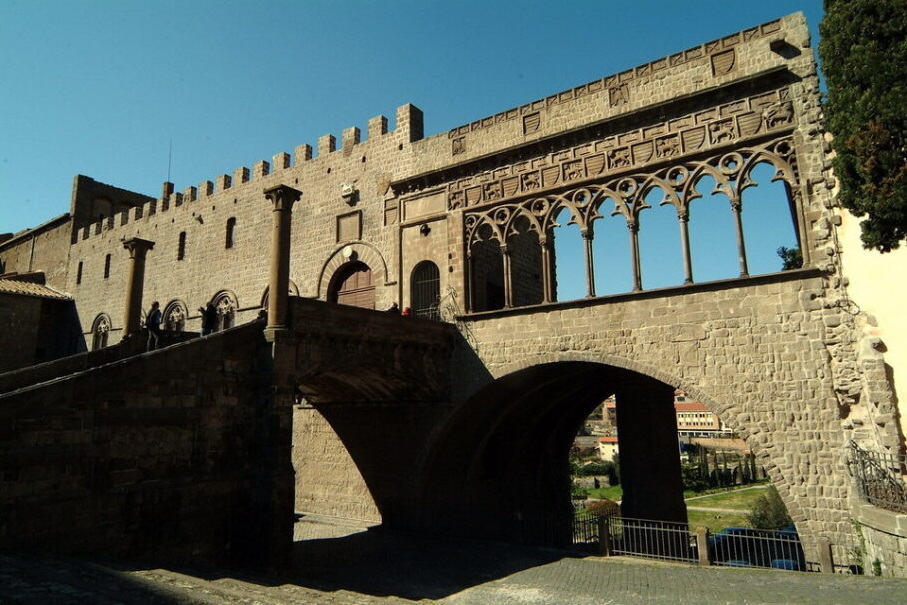
The Papal Palace, symbol of Viterbo
Together with the Cathedral, the Papal Palace, with its elegant Gothic style Loggia, is the most important monument of Viterbo.
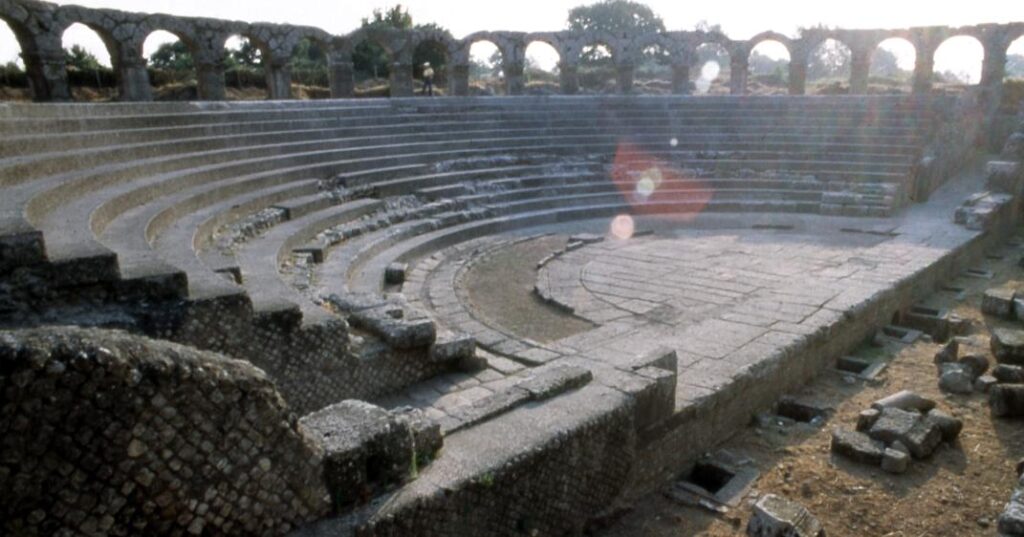
The Roman Theatre of Ferento
Also interesting is the Rocca Albornoz National Etruscan Museum, housed in the fortress of the same name and dedicated to Etruscan archaeology. Not to be missed are the Museo Nazionale Etrusco Rocca Albornoz, the Necropolis of Castel d’Asso, and the archaeological area of Ferento, which testify the Etruscan-Roman origins of Viterbo.
The medieval folklore is influenced by stories of knights, weapons, and love. In 1272, on the altar of the Chiesa del Gesù, the brutal crime of Henry of Cornwall, narrated by Dante Alighieri in his “Inferno”, took place.
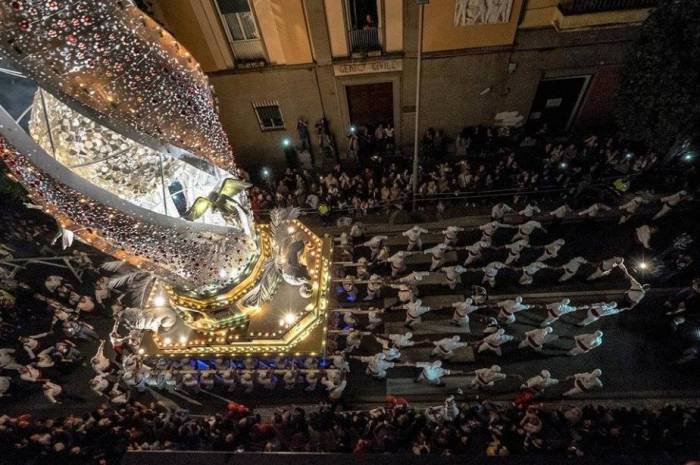
la Macchina di Santa Rosa, Gloria
The legend of Santa Rosa tells about a girl, who became the symbol of the Guelph struggle against the hegemonic pretensions of the Empire. The Saint, Patron of Viterbo, is celebrated every year on the evening of September 3, with the traditional transportation of the Macchina di Santa Rosa.
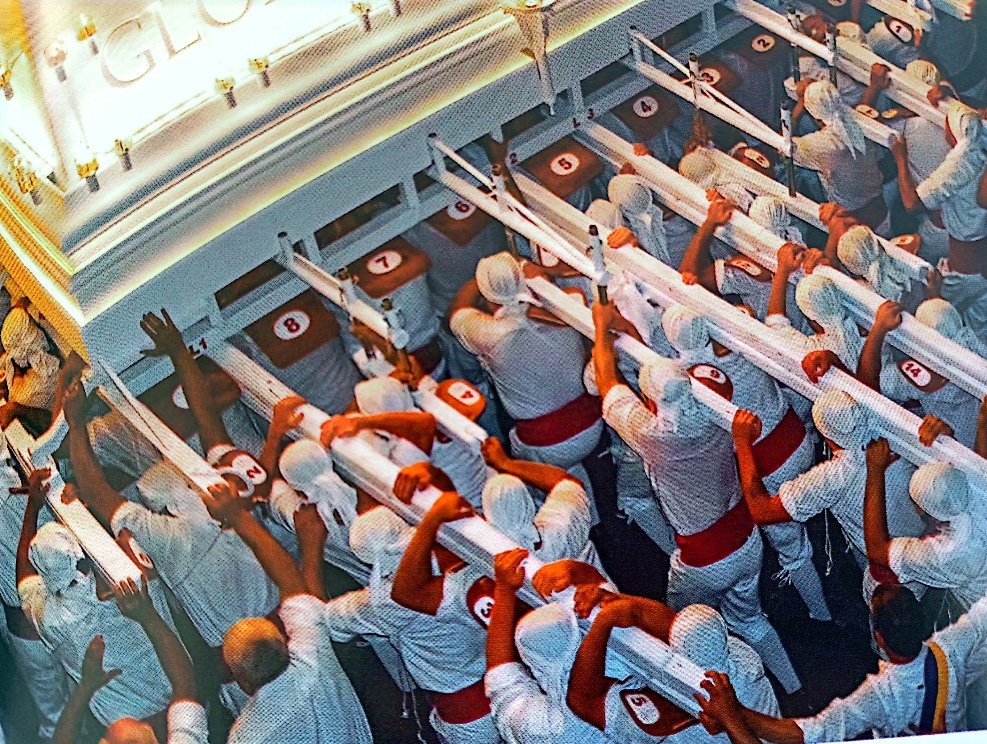
I facchini di Santa Rosa
Her statue, placed on top of an almost thirty metres high tower, with fifty quintals of weight, is carried on shoulder by one hundred porters through the winding alleys of the town, until it arrives to the Santuario delle Monache Clarisse. The amazing event has been included in the “Network of the Machines Carried on Shoulder”, recognized as an intangible heritage by UNESCO in 2013.
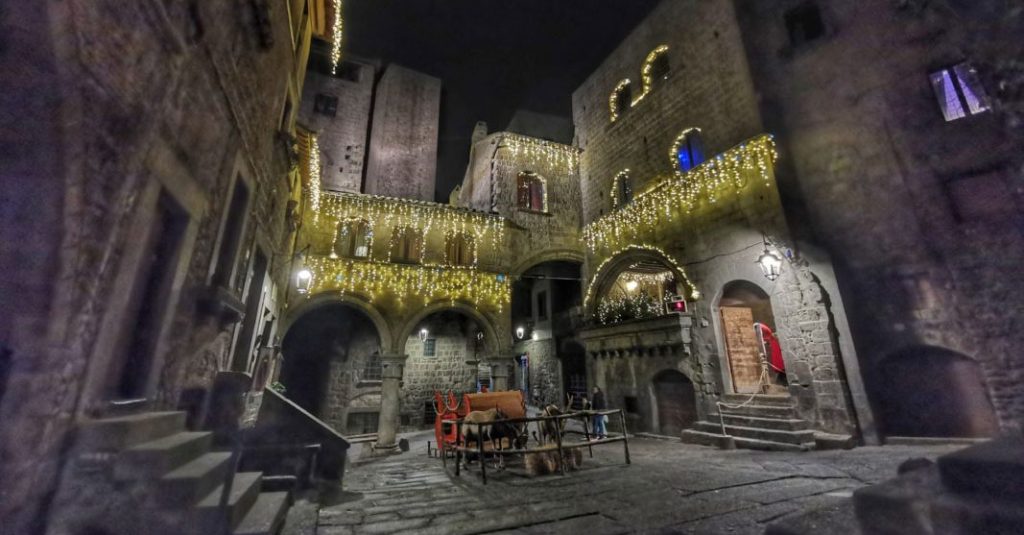
Viterbo Christmas Village – www.viterbochristmas.it
The Christmas holidays are also a very special time for the city. Every year, the Viterbo Christmas Village immerses the historic centre in a magical Christmas atmosphere and enriches the medieval quarter with spectacular attractions such as Santa’s House, the Nativity Scene, markets and shows.
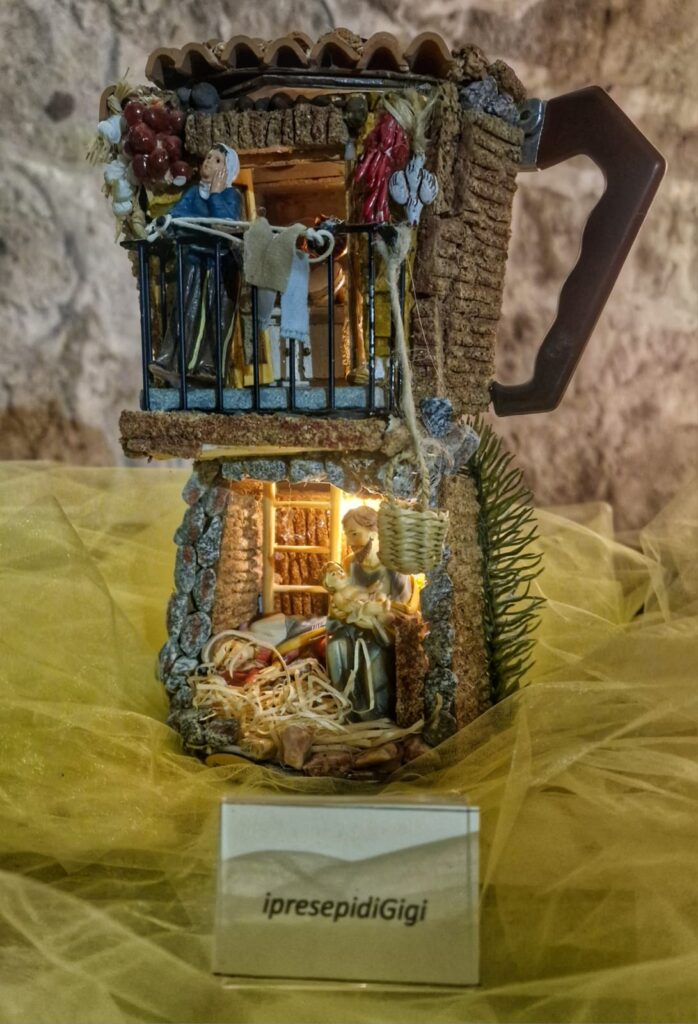
Presepe nella Caffettiera a Viterbo
For lovers of nativity scenes, a must-see is undoubtedly Gigi’s workshop in the medieval quarter of Pianoscarano. Here you can admire many small objects from the past, such as violin cases, old radios and coffee pots, which contain exciting scenes from the Nativity.
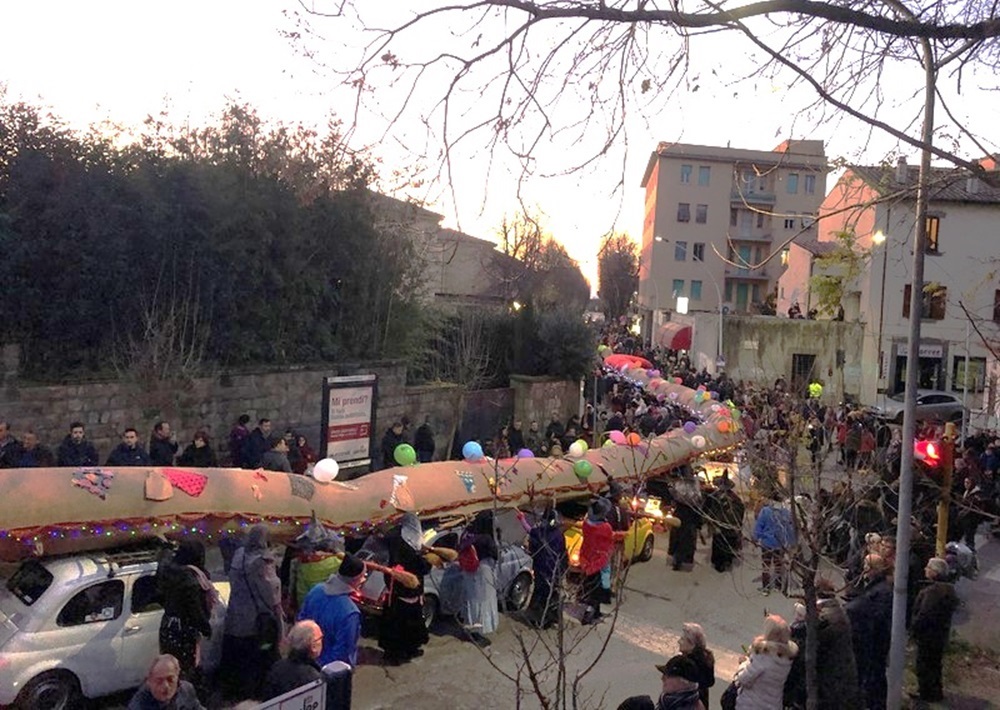
the world’s longest Befana Stocking – viterbochristmas.it
The Christmas celebrations in Viterbo come to a spectacular close with the world’s longest Befana Stocking, which is paraded through the streets of the city centre on 6 January, carried by 100 Befanas and 15 historic Fiat 500 cars.
